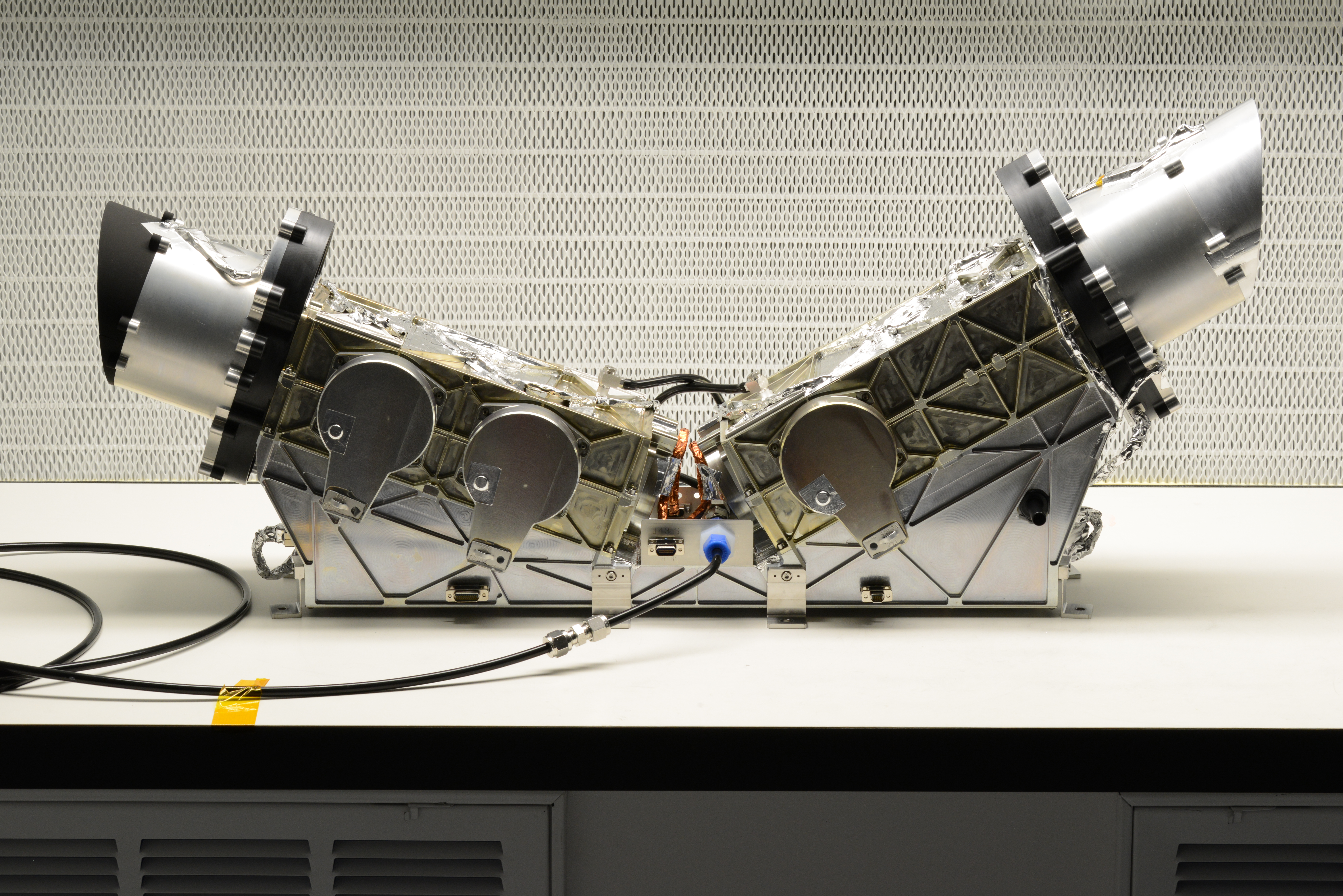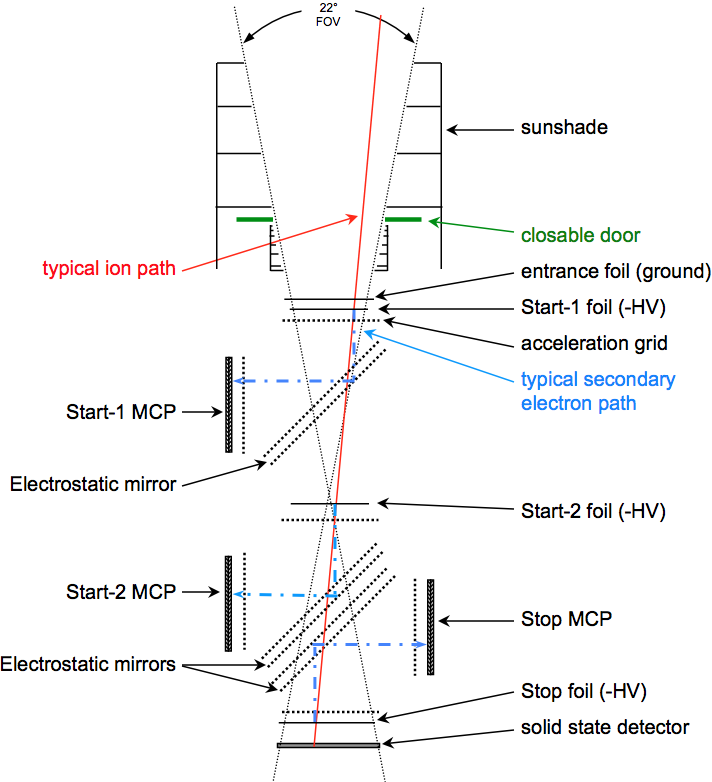
The Suprathermal Ion Spectrograph is an advanced instrument based on the high-resolution Ultra-Low Energy Isotope Spectrometer (ULEIS) instrument on the Advanced Composition Explorer (ACE). SIS will provide observations of He-Fe between energies just above the solar wind to multi MeV/n energies, with high energies covered by other EPD sensors. SIS is composed of two telescopes SIS-A and SIS-B pointing in different directions and sharing the same electronics box. The unit is mounted on the -y-deck of the spacecraft.

SIS particle discrimination and energy determination is based on time-of-flight mass spectrometry. The instrument simultaneously measures the time of
flight (TOF), and residual energy E of ions that enter the telescope's full angle Field of View (FOV) and stop in the silicon solid-state detector at the back.
In the figure a typical ion path is shown: the ion passes through the entrance, Start-1, Start-2, and Stop foils, emitting secondary electrons at each surface. The electrons from the Start-1, Start-2, and Stop foils are accelerated by 1 kV and
directed via isochronous trajectories onto microchannel plates (MCPs) that provide fast Start-1, Start-2 and Stop signals. The timing signals are used to measure the ion TOF between foil
combinations. The three time-of-flight measured are: Start-1 to Stop (TOF-1); Start-2 to Stop (TOF-2); and Start-1 to Start-2 (TOF-3). For an ion with measured energy